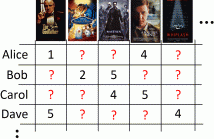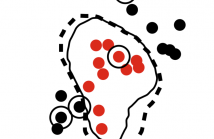- Bayesian learning; Bayesian signal processing (MLR-BAYL)
- Bounds on performance (MLR-PERF)
- Applications in Systems Biology (MLR-SYSB)
- Applications in Music and Audio Processing (MLR-MUSI)
- Applications in Data Fusion (MLR-FUSI)
- Cognitive information processing (MLR-COGP)
- Distributed and Cooperative Learning (MLR-DIST)
- Learning theory and algorithms (MLR-LEAR)
- Neural network learning (MLR-NNLR)
- Information-theoretic learning (MLR-INFO)
- Independent component analysis (MLR-ICAN)
- Graphical and kernel methods (MLR-GRKN)
- Other applications of machine learning (MLR-APPL)
- Pattern recognition and classification (MLR-PATT)
- Source separation (MLR-SSEP)
- Sequential learning; sequential decision methods (MLR-SLER)
Voxels are an effective approach to 3D mesh and point cloud classification because they build upon mature Convolutional Neural Network concepts. We show however that their cubic increase in dimensionality is unsuitable for more challenging problems such as object detection in a complex point cloud scene. We observe that 3D meshes are analogous to graph data and can thus be treated with graph signal processing techniques.
- Categories:
 44 Views
44 Views- Read more about Greedy Deep Transform Learning
- Log in to post comments
We introduce deep transform learning – a new
tool for deep learning. Deeper representation is learnt by
stacking one transform after another. The learning proceeds in
a greedy way. The first layer learns the transform and features
from the input training samples. Subsequent layers use the
features (after activation) from the previous layers as training
input. Experiments have been carried out with other deep
representation learning tools – deep dictionary learning,
stacked denoising autoencoder, deep belief network and PCANet
- Categories:
 72 Views
72 Views- Read more about AN IMAGE RECONSTRUCTION FRAMEWORK BASED ON DEEP NEURAL NETWORK FOR ELECTRICAL IMPEDANCE TOMOGRAPHY
- Log in to post comments
- Categories:
 32 Views
32 Views- Categories:
 2 Views
2 ViewsAlthough promising results have been achieved in the areas of object detection and classification, few works have provided an end-to-end solution to the perception problems in the autonomous driving field. In this paper, we make two contributions. Firstly, we fully enhanced our previously released TT100K benchmark and provide 16,817 elaborately labeled Tencent Street View panoramas.
- Categories:
 34 Views
34 Views- Read more about Phase Retrieval via Coordinate Descent
- Log in to post comments
Phase retrieval refers to recovery of a signal-of-interest given only the intensity measurement samples and has wide applicability including important areas of astronomy, computational biology, crystallography, digital communications, electron microscopy, neutron radiography and optical imaging. The classical problem formulation is to restore the time-domain signal from its power spectrum observations, although the Fourier transform can be generalized to any linear mappings.
- Categories:
 124 Views
124 Views
Matrix completion aims to find the missing entries from incomplete observations using the low-rank property. Conventional convex optimization based techniques minimize the nuclear norm subject to a constraint on the Frobenius norm of the residual. However, they are not robust to outliers and have a high computational complexity. Different from the existing schemes based on solving a minimization problem, we formulate matrix completion as a feasibility problem.
- Categories:
 484 Views
484 Views- Read more about AFFECT RECOGNITION FROM LIP ARTICULATIONS
- Log in to post comments
- Categories:
 3 Views
3 Views- Read more about Disjunctive Normal Shape Boltzmann Machine
- Log in to post comments
Shape Boltzmann machine (a type of Deep Boltzmann machine) is a powerful tool for shape modelling; however, has some drawbacks in representation of local shape parts. Disjunctive Normal Shape Model (DNSM) is a strong shape model that can effectively represent local parts of objects. In this paper, we propose a new shape model based on Shape Boltzmann Machine and Disjunctive Normal Shape Model which we call Disjunctive Normal Shape Boltzmann Machine (DNSBM).
- Categories:
 5 Views
5 Views
Despite the importance of distributed learning, few fully distributed support vector machines exist. In this paper, not only do we provide a fully distributed nonlinear SVM; we propose the first distributed constrained-form SVM. In the fully distributed context, a dataset is distributed among networked agents that cannot divulge their data, let alone centralize the data, and can only communicate with their neighbors in the network. Our strategy is based on two algorithms: the Douglas-Rachford algorithm and the projection-gradient method.
Poster.pdf
- Categories:
 14 Views
14 Views